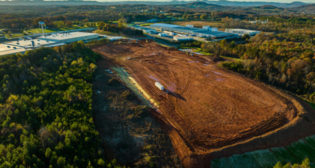Commentary
Takeaways from CP’s Investor Conference
Written by
Roy Blanchard
Canadian Pacific held its annual Investor Conference Dec. 4-5 in New York City; its first since Hunter Harrison took over as President and CEO and began dramatically reshaping the railroad. I caught Harrison’s Tuesday evening opener via webcast and was impressed with what I heard, teeing up, as it did, the Wednesday main event, which CP Vice President Investor Relations Janet Weiss invited me to attend.
Wednesday’s slides are on the Investor page on CP’s website; you should find following along helpful.
Harrison’s opening remarks Tuesday evening served beautifully to set the stage for Wednesday. The theme slide—yard productivity, war on bureaucracy, network review, streamline the asset base, new train designs, and do it all without anybody getting injured—framed what was to follow. It’s a cost take-out story, he said, and service improvements flow from that. He mentioned a “passion for the work,” a favorite phrase of ASLRRA’s Rich Timmons and something we’ve all talked about from time to time.
Harrison defines customer service as doing what you say you’re going to do and doing it from the field without meddling from a huge office staff. Having found a top-heavy organization in a downtown Calgary office tower away from the railroad, he’s closing that, moving the HQ to a trackside location five miles away where you can see the product as you work—and saving $18 million in rental expense in the bargain.
Some 1,800 people have left CP in the past five months, and another 2,000 will go shortly. The older work force lends itself to a natural attrition and the younger staff is staying nimble as work assignments change. CP expects ultimately to be running the railroad with 4,500 fewer employees.
Out on the railroad, CP has already taken a day out of east-west intermodal transit times. Harrison says nobody moves bulk trains over the mountains better than CP and he wants to expand that mindset to merchandise and intermodal trains. CP is taking out passing sidings that are too short and stringing the track segments removed into longer passing sidings at more strategic locations, saving capex dollars and operations dollars (cutting crew-starts by 30%, for example) in one pass.
Harrison closed four hump yards that were designed for 1,400 cars a day and were doing only half that. These yards were designed 50 years ago to support a single-car operating model, when there were no unit trains or intermodal services. Now, with 70% of CP revenue units in unit trains or intermodal, the three-yard (receiving, bowl, outbound) hump facility has outlived itself. Better to combine the three yards into one flat-switch yard and convert the excess assets into free cash flow. We ought to see rapid operating ratio improvements over the next 18 months, with a slowing rate of change after that.
During a brief Q&A following, Harrison was asked about plans for the DM&E west end. Harrison says that business will come to CP regardless of who runs the trains, so CP might has well have somebody out there who can deliver that business to CP at lower cost. He was less forthcoming on the D&H, where he says they’re taking a “cautious” approach. But after all that, one really got the sense he’s “one of us” when he said, “Every night I take the map home and wonder What If.”
The tone of the main event was one of railroaders talking to railroaders about How We Work and Why. To be sure, there was a fair amount of grist for the analyst mill, but to me, listening with the ears of one who’s spent some time on locomotives and on the ground as well as selling rail services to shippers, it was as if they were talking to me in my language.
Three operations presentations started the day and set the scene for all that followed. Senior Vice President System Operations Scott MacDonald showed how hump yard closures force blocking for the distant node, suggesting there may be an incentive for shortvlines to pre-block their outbounds, facilitating block-swaps at flat-switch yards. Better blocking through train design also yields faster locomotive turns and a smaller fleet to do the work. (For sale: 58 SD90MACs.) It’s all about keeping trains out of each other’s way, said Scott, and inviting those who will ultimately do the work to take a leadership role in making process changes works wonders.
Next came Senior Vice President Canadian Operations Guido DeCiccio to build on the yard theme Harrison touched on Tuesday evening. The name of the game is keeping yards fluid and keeping down car-dwell time. DeCiccio has buy-in from all but a few old heads for the more fluid process, making me think of certain regional railroad yards where the younger guys are taking the lead in bringing on change. CP case in point: Winnepeg, where on closer examination it was clear only one car in five actually needed to be there to meet a specific customer need. Going to flat-switch reduces yard car-counts 80%.
Senior Vice President U.S. Operations Doug McFarlane touched on the unique interline considerations affecting CP’s decision to flat-switch Bensonville (Chicago), how they’re upgrading the North Dakota lines to 40 mph from 20 mph to keep the crude oil and frack sand trains moving, and the upgrades to Kenwood Yard in Albany, N.Y., to accommodate more crude oil and ethanol trains. Once again, it’s all about car cycle times and how shippers will seek out the routes that offer the most round trips in the fewest days. As for the D&H fit, Harrison added later that routing protocols may give Chicago hand-offs to CSX and NS a competitive advantage.
With the operating scene thus set, it was time for Chief Marketing Officer Jane O’Hagan to show how CP will use this revitalized property to generate revenue growth at a 4% to 7% CAGR over the next four years. To begin, it will take sustainable, profitable commodity OD pairs and require customer collaboration in finding them. Of particular interest to merchandise carload shippers and short lines is the mix change. Whereas intermodal and bulk (grain, fertilizers, coal) make up 70% of revenue unit volume today, that will shift over the next four years to 60% to 40% bulk over merchandise. Talk about an open door to short lines!
Granted, the emphasis shift is a due to an energy-related mix, a mixed bag for short lines where there are good growth opportunities in frack and and pipe at both ends but limited opportunity in crude by rail. Putting the energy mix in MacDonald’s train design context, oil trains will run through the yards; frack sand blocked by the origin road for the distant node can block-swapped.
O’Hagan’s summary said it all for the entire session: using improved service design to add competitive advantage to customers’ supply chain processes to create more customers and build a 4% to 7% CAGR revenue stream in the bargain. I think CP told the story most eloquently. I talked with a number of the 100-plus analysts in the room and found an air of acceptance and wanting to believe it’ll work. The fact that CP shares jumped nearly 4% on the day tells me the message is getting through.




